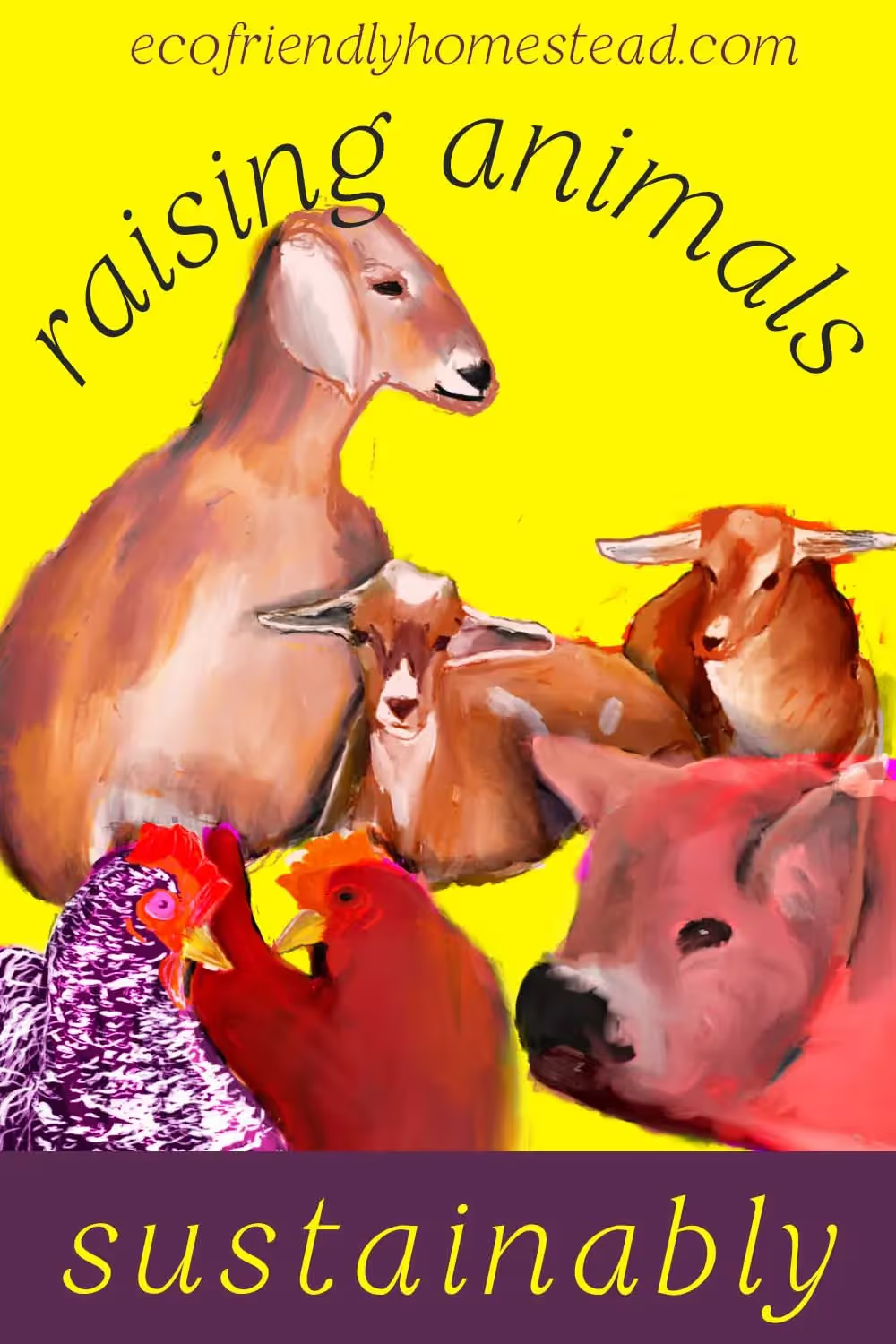
Be a Land Steward.
Sign up for Greenhouse Gases -
a weekly-ish newsletter that will teach you the science behind regenerative gardening, with action steps to help you make a difference in your backyard.

Sign up for Greenhouse Gases -
a weekly-ish newsletter that will teach you the science behind regenerative gardening, with action steps to help you make a difference in your backyard.

Livestock farming has a significant impact on the environment. However, there are steps that farmers can take to reduce that impact. Here are some best practices that can apply to all farm animals to raise sustainable livestock on your homestead:
Some animals are more eco-friendly than others. For example, heritage breeds of livestock are often better suited to the local environment and require less maintenance and inputs. Additionally, some breeds are more suited for foraging, which cuts back on the carbon footprint of feed production and transportation (1).
Low-input animals require less food, water, and other resources to produce the same amount of meat, milk, or eggs as other animals. This means that they have a smaller carbon footprint and lower environmental impact overall. Additionally, low-input animals often have shorter lifespans and produce less waste, which can further reduce their impact on the environment.
Examples of low-input animals that are generally considered to be better for the environment include:
Learn more about raising chickens sustainably
Learn more about raising goats sustainably
By focusing on low-input animals, farmers can reduce the environmental impact of their livestock farming operations while still producing high-quality meat, milk, and eggs.
By integrating livestock into a regenerative garden or homestead, farmers can create a closed-loop system that recycles nutrients and reduces waste. For example, animals can help fertilize crops and control pests, while crops can provide food and forage for the animals.
Animals also help to increase the soil microbiome, which in turn improves the health of the soil.
It has been found that overall, integrating livestock into farmland helps to sequester carbon, which is our goal as sustainable farmers (5).
If feed must be purchased, using organic and/or local feed can help reduce the environmental impact of livestock farming. Organic feed is produced without the use of synthetic fertilizers, pesticides, or genetically modified organisms (6).
It’s important to look at your needs for yourself and your family - how much milk/eggs/meat do you actually need and how can you find a balance between that and the number of animals that you’re raising? As farmers focusing on tending to the environment, it is also good to make a goal to reduce your overall intake of meat products. However, it does go without saying that raising your own food is far better for the environment as opposed to buying generic meat/dairy/eggs from the market.
From there, it’s also essential to measure the amount of land that the livestock will be occupying and calculate the number of animals that space can carry sustainably.
By implementing these best practices, you can reduce the environmental impact of your livestock farming operations while still producing high-quality meat, milk, and eggs.
goats / pigs / chickens